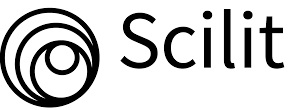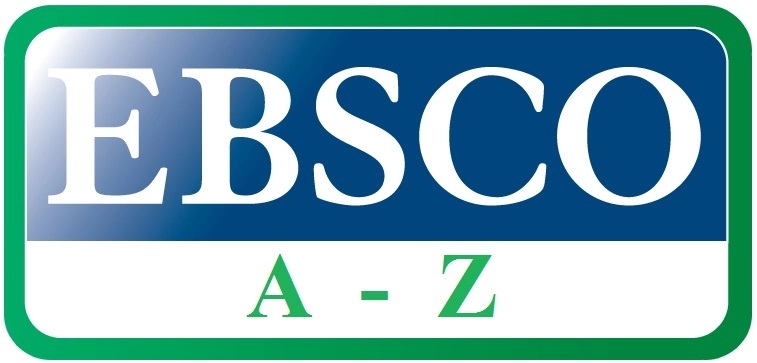PENGARUH PENAMBAHAN MALTODEKSTRIN TERHADAP KARAKTERISTIK FISIKOKIMIA BUBUK TOMAT HASIL PENGERINGAN PEMBUSAAN (FOAM MAT DRYING)
Abstract
Tomat termasuk komoditas tanaman yang banyak dijumpai di Indonesia, namun memiliki nilai ekonomi
yang rendah dan mudah rusak. Salah satu usaha yang dapat dilakukan untuk mengatasi hal tersebut adalah dengan
mengolah tomat menjadi berbagai produk olahan salah satunya adalah pembuatan bubuk tomat. Pembuatan bubuk
suatu bahan dapat dilakukan dengan metode pengeringan pembusaan. Penelitian bertujuan untuk mengetahui
pengaruh penambahan maltodekstrin sebagai bahan pengisi terhadap karakteristik fisikokimia bubuk tomat yang
dihasilkan. Metode yang digunakan dalam penelitian ini adalah eksperimental laboratorium dengan analisis
deskriptif. Perlakuan yang dicoba adalah penambahan maltodekstrin (10%, 15% dan 20% b/b), dengan tiga kali
ulangan. Parameter yang diamati meliputi: rendemen, warna, laju pengeringan, dan karakteristik fisikokimia bubuk
tomat yang meliputi warna, kadar air, kadar abu, kelarutan, indeks penyerapan air, bulk density, foam density,
kadar vitamin C, dan higroskopisitas. Hasil penelitian menunjukkan rata-rata kadar air awal campuran jus dan pulp
tomat hasil proses mixing adalah 82,68% (bb) hingga 94,9% (bb). Nilai kadar air bubuk tomat berkisar antara
5,86% (bb) hingga 15,28% (bb). Pada penelitian ini hasil terbaik terdapat pada bubuk tomat dengan perlakuan
penambahan maltodekstrin 20% dengan hasil rendemen 15,29%; kadar air 5,86%; kadar abu 6,24%; foam density
0,57 g/cm3; bulk density 0,77 g/cm3; kelarutan 95,23%; indeks penyerapan air 12,96%; tingkat higroskopisitas
11,36%; kadar vitamin C 75,49 mg/100g. Karakteristik warna bubuk tomat pada perlakuan penambahan
maltodekstrin maupun kontrol menghasilkan warna kromatis merah.
Kata kunci: bubuk tomat, maltodekstrin, pengeringan pembusaan, tomat
ABSTRACT
Tomato is one of plant commodities that easy to find in Indonesia, but it is easily damaged and has a low
economic price. One of the alternative to solve the problem was performed by processing the fresh tomato into
tomato powder. Tomato powder can made by foam mat drying method. The purpose of this study was to determine
the effect of maltodextrin addition as a filler material on physicochemical properties of tomato powder that made
by foam mat drying. This study conducted with laboratory experimental method with descriptive analysis. There
were three repetitions that consisted of 3 treatments based on the maltodextrin addition (10%, 15% and 20% w/w).
The observed parameters were total yield value, colour, drying rate, and physicochemical properties such as
colour, moisture content, ash content, solubility, water absorption index, bulk density, foam density, vitamin C
content, and hygroscopicity. The results showed that the average moisture content of tomato juice and pulp from
mixing process was 82.68% (bb) to 94.9% (bb). The value of tomato powder water content ranges from 5.86%
(bb) to 15.28% (bb). In this study, the best results were found in tomato powder with 20% maltodextrin addition
treatment with total yield of 15.29%; 5.86% moisture content; 6.24% ash content; foam density 0.57 g/cm3; bulk
density 0.77 g/cm3; 95.23% solubility; water absorption index 12.62%; hygroscopicity 11.36%; vitamin C content
75.49 mg/100g. All of maltodextrin additions and control treatments with and without maltodextrin were resulting
red chromatic colour characteristic.
Keywords: foam mat drying, maltodextrin, tomato, tomato powder
yang rendah dan mudah rusak. Salah satu usaha yang dapat dilakukan untuk mengatasi hal tersebut adalah dengan
mengolah tomat menjadi berbagai produk olahan salah satunya adalah pembuatan bubuk tomat. Pembuatan bubuk
suatu bahan dapat dilakukan dengan metode pengeringan pembusaan. Penelitian bertujuan untuk mengetahui
pengaruh penambahan maltodekstrin sebagai bahan pengisi terhadap karakteristik fisikokimia bubuk tomat yang
dihasilkan. Metode yang digunakan dalam penelitian ini adalah eksperimental laboratorium dengan analisis
deskriptif. Perlakuan yang dicoba adalah penambahan maltodekstrin (10%, 15% dan 20% b/b), dengan tiga kali
ulangan. Parameter yang diamati meliputi: rendemen, warna, laju pengeringan, dan karakteristik fisikokimia bubuk
tomat yang meliputi warna, kadar air, kadar abu, kelarutan, indeks penyerapan air, bulk density, foam density,
kadar vitamin C, dan higroskopisitas. Hasil penelitian menunjukkan rata-rata kadar air awal campuran jus dan pulp
tomat hasil proses mixing adalah 82,68% (bb) hingga 94,9% (bb). Nilai kadar air bubuk tomat berkisar antara
5,86% (bb) hingga 15,28% (bb). Pada penelitian ini hasil terbaik terdapat pada bubuk tomat dengan perlakuan
penambahan maltodekstrin 20% dengan hasil rendemen 15,29%; kadar air 5,86%; kadar abu 6,24%; foam density
0,57 g/cm3; bulk density 0,77 g/cm3; kelarutan 95,23%; indeks penyerapan air 12,96%; tingkat higroskopisitas
11,36%; kadar vitamin C 75,49 mg/100g. Karakteristik warna bubuk tomat pada perlakuan penambahan
maltodekstrin maupun kontrol menghasilkan warna kromatis merah.
Kata kunci: bubuk tomat, maltodekstrin, pengeringan pembusaan, tomat
ABSTRACT
Tomato is one of plant commodities that easy to find in Indonesia, but it is easily damaged and has a low
economic price. One of the alternative to solve the problem was performed by processing the fresh tomato into
tomato powder. Tomato powder can made by foam mat drying method. The purpose of this study was to determine
the effect of maltodextrin addition as a filler material on physicochemical properties of tomato powder that made
by foam mat drying. This study conducted with laboratory experimental method with descriptive analysis. There
were three repetitions that consisted of 3 treatments based on the maltodextrin addition (10%, 15% and 20% w/w).
The observed parameters were total yield value, colour, drying rate, and physicochemical properties such as
colour, moisture content, ash content, solubility, water absorption index, bulk density, foam density, vitamin C
content, and hygroscopicity. The results showed that the average moisture content of tomato juice and pulp from
mixing process was 82.68% (bb) to 94.9% (bb). The value of tomato powder water content ranges from 5.86%
(bb) to 15.28% (bb). In this study, the best results were found in tomato powder with 20% maltodextrin addition
treatment with total yield of 15.29%; 5.86% moisture content; 6.24% ash content; foam density 0.57 g/cm3; bulk
density 0.77 g/cm3; 95.23% solubility; water absorption index 12.62%; hygroscopicity 11.36%; vitamin C content
75.49 mg/100g. All of maltodextrin additions and control treatments with and without maltodextrin were resulting
red chromatic colour characteristic.
Keywords: foam mat drying, maltodextrin, tomato, tomato powder
Full Text:
PDFRefbacks
- There are currently no refbacks.












